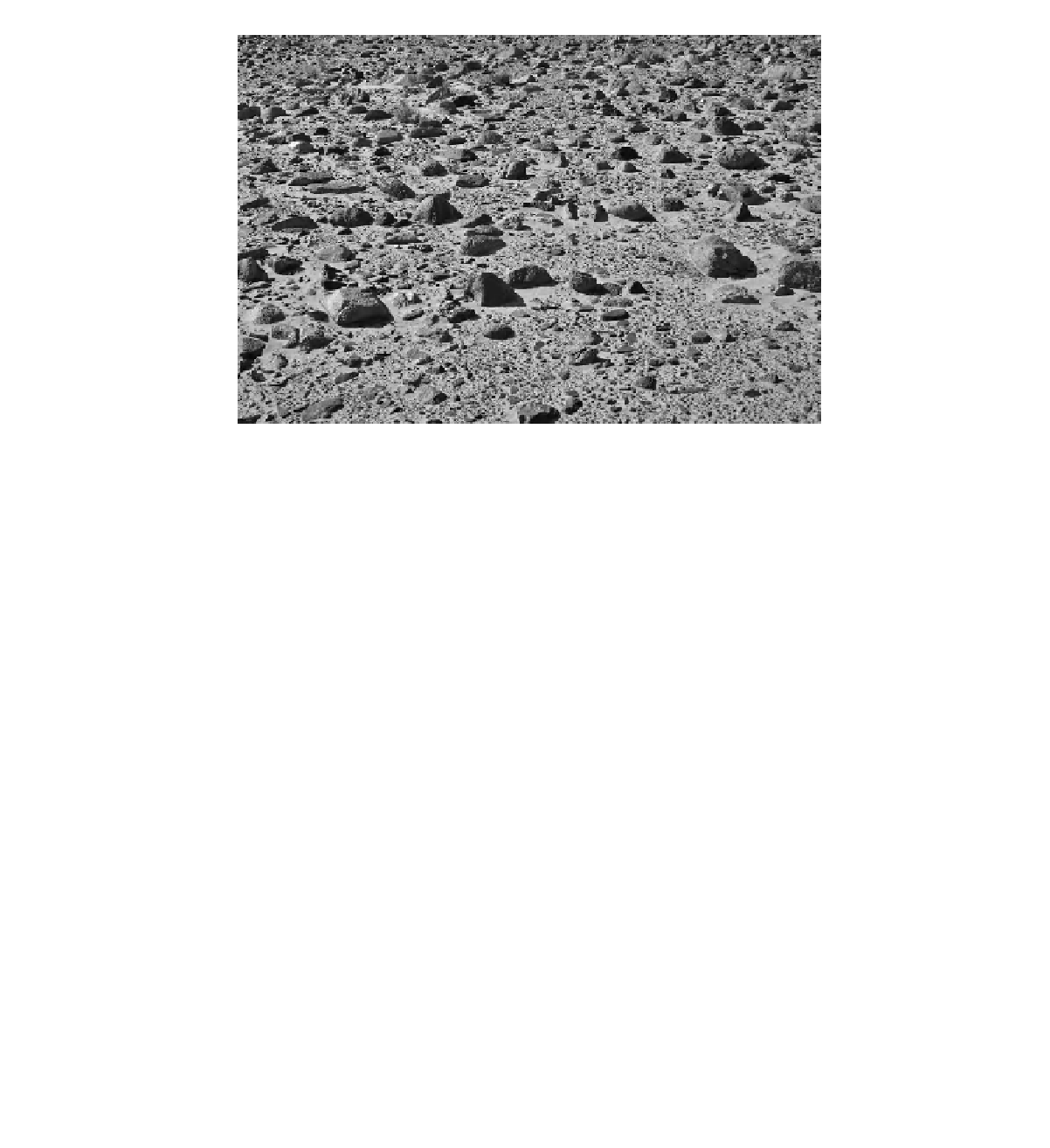Geoscience Reference
In-Depth Information
Figure 9.2
Boulder hamada to the east of the Sierra Nevada, California. The boulders were transported short distances from
nearby mountains and then isolated from further fluvial activity by faulting along the southern margin of Owens Lake. The boulders
have become more angular over time from abrasion. The hamada, mantled by loose sand, is transitional to a developing pavement.
of rounding and texture, development of desert varnish,
substrate, age and the degree to which the particles in-
terlock. Furthermore, many gravel mantles, although dif-
fering in name, share enough characteristics that they are
essentially of the same type. Thus, a 'pavement' in one
region may be a 'serir' in another. Conversely, there may
be significant differences in form or developmental his-
tory that are not yet fully understood. This section will
summarise what is known about these different named
surfaces. Following this initial regional examination, the
most widely studied of these types, the desert pavement,
will be examined in more detail.
section, is filled with a very thick sequence of gravel beds
(Mengxiong, 1994). Much of the rain and melting snow
and ice from the mountains disappear into these gravel
sequences. In piedmont areas, removed from the presence
of sand, the gravel cover may reach 100 % (Figure 9.3). In
recent deposits, the surface clasts retain a rounded form
and soil is absent.
Many Chinese dune fields are surrounded by gobi sur-
faces. One general theory for pavement formation is that
it represents a deflationary lag. Although this idea has
been largely discredited for accretionary desert pavements
in southwestern North America and elsewhere (see the
discussion later in this chapter), deflation may play a
role where both gravel and sand are present, including
some gobi.
To date, there appears to be little research on the nature
of gobi in central Asia. My own brief travels suggest at
least three types of gravel surfaces: (1) fresh, relatively
unmodified gravel surfaces with rounded fluvial clasts;
(2) gobi in sandy environments (potentially 'deflationary
gobi', but not yet properly documented); and (3) well-
knit, varnished pavements, with smoothed surfaces and
an underlying stone-free and silty substrate, similar to ac-
cretionary stone pavements of southwestern North Amer-
ica. The unmodified gobi occur where active storms and
flooding bring gravel from the mountains on to the pied-
mont surfaces: the gravels and cobbles are well rounded
and largely unvarnished, and lack the silt-rich subsurface
9.2.2.1
Gobi
The term 'gobi' is Mongolian, referring to a region of
flat gravel pavement (Wang
et al.
, 2006) that forms the
basis of the Gobi Desert. In Mongolia, 14 % of the land is
desert, with surfaces extensively covered in gravel (Yang
et al.
, 2004). 'Gobi' is also used in arid parts of China (Li
et al.
, 2006), where vast expanses of unvegetated gravel
plains occur (Figure 9.3). In northern China, gobi covers
about 44 % of the desert (Yang
et al.
, 2004).
Gravel-covered regions are further subdivided into gobi
of accumulation and gobi of denudation (Yang
et al.
,
2004), but these terms are not clearly defined. 'Gobi
of accumulation' appears to refer to the extensive pied-
mont plains that cover the inland Quaternary basin sur-

